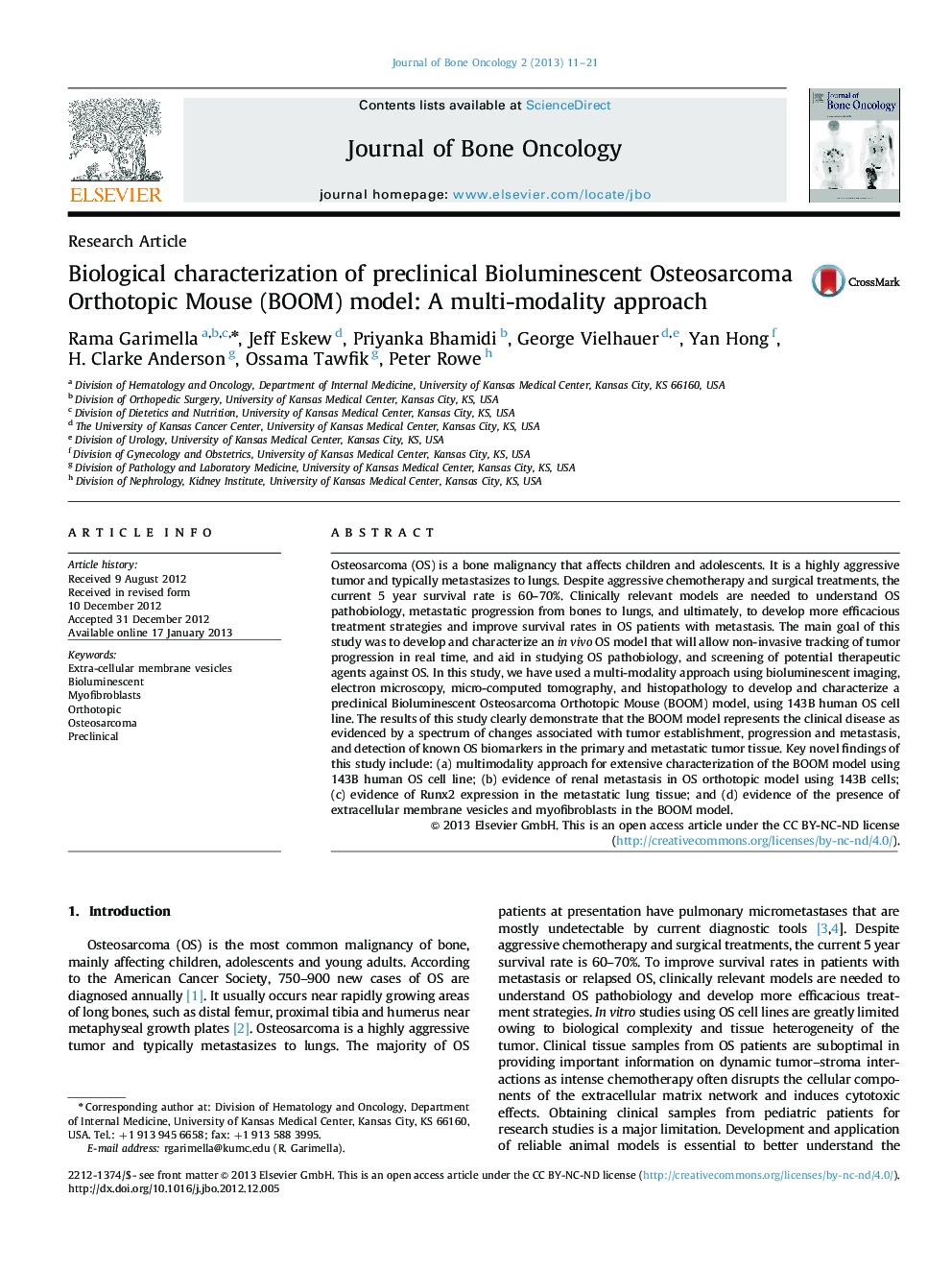| Article ID | Journal | Published Year | Pages | File Type |
|---|---|---|---|---|
| 2136190 | Journal of Bone Oncology | 2013 | 11 Pages |
Osteosarcoma (OS) is a bone malignancy that affects children and adolescents. It is a highly aggressive tumor and typically metastasizes to lungs. Despite aggressive chemotherapy and surgical treatments, the current 5 year survival rate is 60–70%. Clinically relevant models are needed to understand OS pathobiology, metastatic progression from bones to lungs, and ultimately, to develop more efficacious treatment strategies and improve survival rates in OS patients with metastasis. The main goal of this study was to develop and characterize an in vivo OS model that will allow non-invasive tracking of tumor progression in real time, and aid in studying OS pathobiology, and screening of potential therapeutic agents against OS. In this study, we have used a multi-modality approach using bioluminescent imaging, electron microscopy, micro-computed tomography, and histopathology to develop and characterize a preclinical Bioluminescent Osteosarcoma Orthotopic Mouse (BOOM) model, using 143B human OS cell line. The results of this study clearly demonstrate that the BOOM model represents the clinical disease as evidenced by a spectrum of changes associated with tumor establishment, progression and metastasis, and detection of known OS biomarkers in the primary and metastatic tumor tissue. Key novel findings of this study include: (a) multimodality approach for extensive characterization of the BOOM model using 143B human OS cell line; (b) evidence of renal metastasis in OS orthotopic model using 143B cells; (c) evidence of Runx2 expression in the metastatic lung tissue; and (d) evidence of the presence of extracellular membrane vesicles and myofibroblasts in the BOOM model.
► A multi-modality approach is an effective strategy to characterize the BOOM model. ► Evidence of pulmonary and renal metastasis in the BOOM model. ► Runx2 immunolocalization in the metastatic lung tissue of the BOOM model. ► Evidence of the presence of extracellular membrane vesicles and myofibroblasts in the BOOM model. ► The BOOM model represents the clinical disease.
